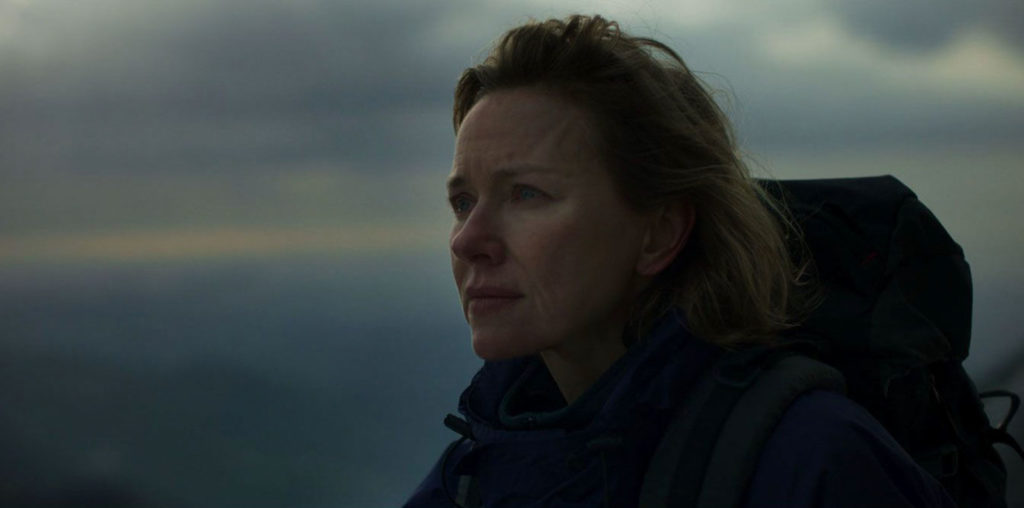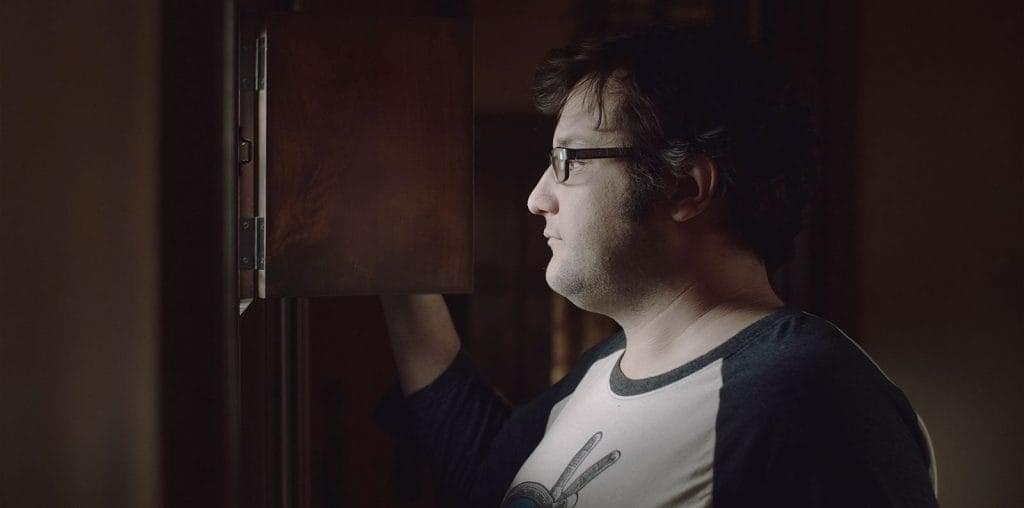
During the 1910s and early 1920s, film producer Thomas Ince was among the most prominent figures in the motion picture industry. His creation of Inceville served as the foundation for the modern Hollywood studios, and his extraordinary output tackled provocative subjects relating to religion, race, social inequity and gender equality.
Today, Ince’s name is barely recognized by most moviegoers. If he is recalled, it is for the urban legend regarding his death – rumor mongering mischief-makers insist that he was murdered by controversial publisher William Randolph Hearst.
Brian Taves, film scholar and archivist with the Library of Congress, has written the new biography “Thomas Ince: Hollywood’s Independent Pioneer” (published by University Press of Kentucky). This fascinating book offers insight into the professional achievements and personal struggles facing Ince during the tumultuous silent movie era. Film Threat interviewed Taves on Ince’s invaluable contributions to filmmaking.
How is it that the films of Thomas Ince – unlike many of his peers of the silent cinema era – are not widely recognized by the general movie-loving public?Thomas Ince is mentioned in almost every history of Hollywood. His corporate papers survive, as do a large share of his films, largely due to the far-sightedness of his widow, who outlived him by 47 years. Yet today, relatively Ince films are seldom shown – ironically, because they are in the public domain and, therefore, no one can have an exclusive stake in distributing the films. As recently as the 1970s, numerous Ince films were available in 8mm and 16 mm, and such companies as Blackhawk had whole pages devoted to Ince in their catalog. However, with the conversion to video as the medium for home distribution, few of these were placed on commercial video for silent cinema enthusiasts.
For instance, one might think there would be distribution for Ince’s 1923 version of “Anna Christie,” the first Eugene O’Neill play brought to the screen, considered a bold gamble by Ince given the censorship of the time. Ince was producing a series of films on the changing role of women in American society, especially outside the home, including such topics spousal abuse and out-of-wedlock-birth. Certainly the sound version of “Anna Christie” from 1930 shows frequently, as do other silents with Greta Garbo, since they are controlled by MGM. However, Ince’s version only survives because George Eastman House repatriated the film from the Russian film archive and undertook a restoration of this “orphan” film.
Although my book was named TCM’s January book-of-the-month, Turner Classic Movies only has a handful of Ince titles to screen. A number of early Ince short films appear on Netflix, Amazon, and YouTube. The first, second, and fifth DVD sets by the National Film Preservation Foundation all contain Ince movies, including “The Invaders” and “The Last of the Line,” both sympathetic to the plight of the Native Americans. Kino’s “Reel Baseball” DVD contains a couple of Ince’s movies on the national pastime, and the DVD set “Perils of the New Land,” offers his classic “The Italian,” one of the four Ince films currently on the National Film Registry.
The other most readily available Ince film is “The Wrath of the Gods,” the most important feature in his cycle creating the first Asian stars in Hollywood, is included as a bonus on “The Dragon Painter” DVD from Milestone Films. By watching websites for collectors, more titles can be found, at varying levels of quality.
Still, this leaves the vast majority of Ince’s films only viewable in archives or their rare public screenings. Hopefully, my book will help to suggest placing more of his films in circulation, and perhaps some of the lost titles will be discovered. Ince’s oeuvre is astonishingly modern in its concerns and sensibilities: religious hypocrisy, families abandoned by the husband, love inside and outside of marriage, and two career couples, are all explored in his films.
What was the inspiration for Ince’s groundbreaking Inceville concept?
When Ince arrived was dispatched by New York Motion Picture Corp. to California, he had already had experience making movies with Mary Pickford in Cuba. There he had utilized the varied Spanish backgrounds, recognizing the advantages to be gained by location shooting, perceiving a demand for realism on the part of filmgoers that many of his contemporaries overlooked.
Upon arriving at the company’s studio in the Echo Park district of Los Angeles, he was dismayed to see, in his words, an outdoor stage that showed a “a flock of birds supposedly in flight… stationary birds poised in mid-air as the backdrop for a moving picture.” On the other hand, the company had used land in the Santa Monica mountains for westerns, and he persuaded the managers to lease tens of thousands of additional acreage in the Santa Ynez Canyon, near where Sunset Boulevard intersects Pacific Coast Highway today. To enhance the location, Ince secured a traveling Wild West show, the Miller Brothers 101 Ranch, for $2000 a week, and their real cowboys and Indians allowed making large-scale, historically-based westerns.
Audiences around the world were impressed by the realism and spectacle, and Ince recognized that this same approach to filmmaking would be viable in many genres; for instance, the same location was ideal for Civil War films, popular during the conflict’s 50th anniversary. By the end of 1913, “Inceville” had a staff of 700 and included a Japanese fishing village, a Puritan settlement, and a pirate brigantine at anchor. By 1915, the weekly payroll was $20,000; the refreshment stand had been replaced by a commissary; there were 200 dressing rooms, and six stables and corrals. Stars like John Gilbert, Charles Ray, Sessue Hayakawa, and William S. Hart were all filming at Inceville.
Still, there were disadvantages: heavy fogs prevented shooting on some days, the wind blew sand into the laboratories, and brush fires posed a constant hazard. Ince realized he should establish an inland studio facility with modern enclosed stages and offices, and took advantage of an offer from real estate promoter Harry Culver. Two years later Ince constructed his own, new studio with a white colonial frontage resembling Mount Vernon that appeared in many films and is still in use today. Inceville remained for exteriors, until fires destroyed the last remaining sets in 1924, the same year that Ince died. The land was then turned over to commercial development, and is today the area around Castellammare.
 In your view, what were Ince’s best surviving films? And which of his lost films would you most wish to locate?
In your view, what were Ince’s best surviving films? And which of his lost films would you most wish to locate?
Previous writing about Ince has tended to emphasize the early Westerns, both at Inceville after Ince brought William S. Hart to the screen. However, their realism was also reflected in Ince’s ethnic stories, such as the urban immigrant tale “The Italian” (1915), and bringing the first Asian performers to Hollywood stardom, Tsuru Aoki and Sessue Hayakawa – even as “yellowface” dominated American filmmaking. Once Ince was truly an independent producer, he depicted the shifting role of women in modern American society, in marriage, the home, and the workplace, as epitomized in his “Anna Christie” (1923). Ince often highlighted hypocrisy in the practice of Christianity; the Inces were theosophists, and portrayals the Far East were often shown in his films, such as the Orientalized romance, “The Price Mark” (1917).
“The Empty Water Keg” (1912) and “The Invaders” (1912) are examples of his best westerns, and “The Drummer of the 8th” (1913), “Granddad” (1913), and “The Coward” (1915) of the Civil War films that were also popular with the 50th anniversary of the conflict; he would film “Barbara Frietchie” (1924) near the end of his career.
“The Wrath of the Gods” (1914), set in Japan, was the first of the Aoki-Hayakawa films, and the recently restored “The Bargain” (1914) was the first of the Hart westerns. Best remembered of the Hart films is “Hell’s Hinges” (1916), and its critical perspective on religious faith was placed in the context of women’s rights in “Keys of the Righteous” (1918) and “Hail the Woman” (1921).
While Ince’s “Civilization” (1916) linked Christianity to pacifism, once America entered the war, Ince made distinctive wartime films. Among these is the espionage thriller “False Faces” (1919), with Lon Chaney, and also emphasizing submarine warfare was “Behind the Door” (1919), which astonishingly brutal even by today’s standards: the villain, guilty of rape and mass murder, dies as he is skinned alive by the vengeful hero.
Some pictures looked to the future: “Dangerous Hours” (1920) examined domestic terrorism, while “The Dark Mirror” (1920) forecast film noir, but was entirely the product of American, not European talent. “The Son of His Father” (1917) and “One a Minute” (1921) took scathing looks at contemporary business practices. “Partners Three” (1919) and “Tyrant Fear” (1918) examined wives caught in marriages with abusive husbands.
All of the films mentioned above survive, most of them complete, in archives, but only a few are to be readily found on DVD: “The Invaders,” “The Coward,” “The Wrath of the Gods,” “Hell’s Hinges,” “The Italian” and “Civilization.” There are a number of lost Ince films, most notably Mrs. Wallace Reid’s hit anti-drug crusade “Human Wreckage” (1923), but also “Christine of the Hungry Heart” (1924), the first of the films Ince was to adapt from stories published in William Randolph Hearst’s magazines.
If we can finally put the rumor to rest: was Ince murdered by William Randolph Hearst, or did he die of natural causes?
Thomas Ince wasn’t shot by Hearst or anyone else, contrary to the apocryphal nonsense of “The Cat’s Meow” and other accounts found on the Web, all of which are united in one way: none are sourced in the investigations of the time, from those of law-enforcement officials, to journalists working for Hearst’s competitors. In fact, Ince was felled by overwork, as all the evidence agrees. Having made 800 films from 1910 to 1924 resulted not only in a reputation for box-office success, but also ulcers and angina. If there was an Ince cover-up, it was his health; as an independent producer, Ince had to be known as a sound investment for loans and distribution contracts.
There was every reason for Hearst to want to align with Ince; his studio was one of the finest such in Hollywood (still in use today). Ince had produced 15 films in 1924, and had another nine before the camera.
On a November weekend in 1924, Ince and Hearst had met to finalize the plans, under discussion for several years. It began at his home with a Saturday morning visit from Hearst, and that night Ince had a preview of one of Ince’s new films to gauge audience response. After little if any sleep, Ince traveled to San Diego and boarded Hearst’s yacht for negotiations. After snacking on salted almonds and joining in the toasts (despite his doctor’s orders to avoid alcohol) for both his own and his son’s birthday, Ince was stricken.
In the dawn hours, complaining of fatigue and pain from his ulcers, he took a small boat ashore and consulted nurses and a doctor. His wife, Elinor, and their eldest son (age fifteen, and who would take up the practice of medicine as an adult) hastened to Ince’s side and brought him home where, despite the attention of his personal physician, a thrombosis ended his life two days later.
Typically, the legend suggests that Hearst shot Ince by accident in a jealous rage over Marion Davies’ camaraderie with Charlie Chaplin. Then why did Hearst and Chaplin remain cordial until the late 1930s, when they clashed over politics? And it would be difficult to mistake, even by moonlight, the burly producer for the slight comedian. Supposedly, Hollywood columnist Louella Parsons was a witness and so gained her position with Hearst’s syndicate – except that she was in New York at the time, and had already been under contract with Hearst for a year.
The conspiracy theorists suggest that Ince’s cremation somehow confirms their beliefs, unaware that the Inces were theosophists and opposed to burial. The casket was open during the funeral, attended by dozens of Hollywood’s elite, and the body had been examined by police: no wounds were found.
Elinor Ince would hardly have been complacent in the murder of the father of her three young boys. She in no way blamed Hearst, and continued to visit San Simeon, just as she had with her husband when he was alive. This was not for Hearst hush money; Elinor had a million-dollar estate derived from the sale of her husband’s studio and corporate assets, along with real estate the couple owned.
Where did the rumors start? At the time, the Hearst-Davies liaison was only hinted at in the press; and by aligning with Hearst, Ince associated with a figure whose adversaries were legion. Ince himself had irked many in the fourth estate because he had just produced a controversial expose of yellow journalism, “Her Reputation” (1923), also the first film he chose to receive a major publishing tie-in as an original novel.
Thomas Ince deserves recognition for his contributions to cinema and early Hollywood, not as a supporting player in a fantasized scandal.



